Valeriu Codreanu
Reduced Precision Strategies for Deep Learning: A High Energy Physics Generative Adversarial Network Use Case
Mar 18, 2021



Abstract:Deep learning is finding its way into high energy physics by replacing traditional Monte Carlo simulations. However, deep learning still requires an excessive amount of computational resources. A promising approach to make deep learning more efficient is to quantize the parameters of the neural networks to reduced precision. Reduced precision computing is extensively used in modern deep learning and results to lower execution inference time, smaller memory footprint and less memory bandwidth. In this paper we analyse the effects of low precision inference on a complex deep generative adversarial network model. The use case which we are addressing is calorimeter detector simulations of subatomic particle interactions in accelerator based high energy physics. We employ the novel Intel low precision optimization tool (iLoT) for quantization and compare the results to the quantized model from TensorFlow Lite. In the performance benchmark we gain a speed-up of 1.73x on Intel hardware for the quantized iLoT model compared to the initial, not quantized, model. With different physics-inspired self-developed metrics, we validate that the quantized iLoT model shows a lower loss of physical accuracy in comparison to the TensorFlow Lite model.
* Submitted at ICPRAM 2021; from CERN openlab - Intel collaboration
Densifying Assumed-sparse Tensors: Improving Memory Efficiency and MPI Collective Performance during Tensor Accumulation for Parallelized Training of Neural Machine Translation Models
May 10, 2019

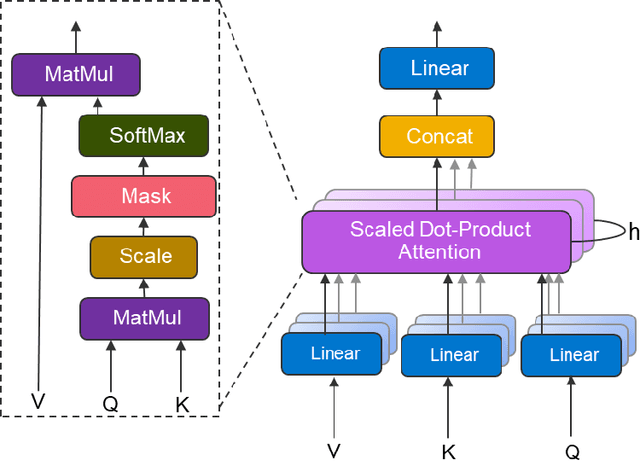

Abstract:Neural machine translation - using neural networks to translate human language - is an area of active research exploring new neuron types and network topologies with the goal of dramatically improving machine translation performance. Current state-of-the-art approaches, such as the multi-head attention-based transformer, require very large translation corpuses and many epochs to produce models of reasonable quality. Recent attempts to parallelize the official TensorFlow "Transformer" model across multiple nodes have hit roadblocks due to excessive memory use and resulting out of memory errors when performing MPI collectives. This paper describes modifications made to the Horovod MPI-based distributed training framework to reduce memory usage for transformer models by converting assumed-sparse tensors to dense tensors, and subsequently replacing sparse gradient gather with dense gradient reduction. The result is a dramatic increase in scale-out capability, with CPU-only scaling tests achieving 91% weak scaling efficiency up to 1200 MPI processes (300 nodes), and up to 65% strong scaling efficiency up to 400 MPI processes (200 nodes) using the Stampede2 supercomputer.
Scale out for large minibatch SGD: Residual network training on ImageNet-1K with improved accuracy and reduced time to train
Nov 15, 2017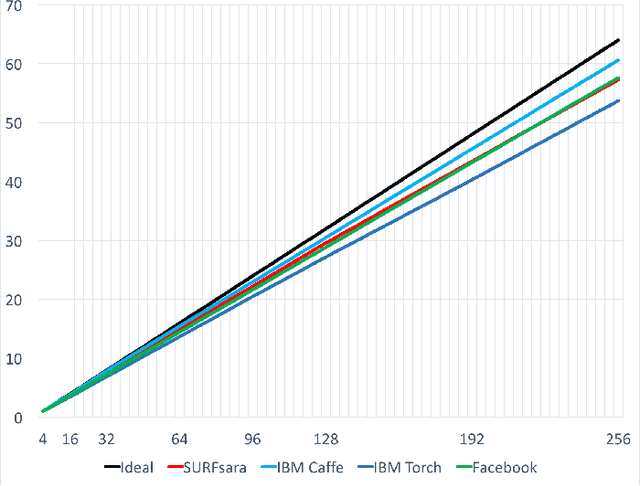
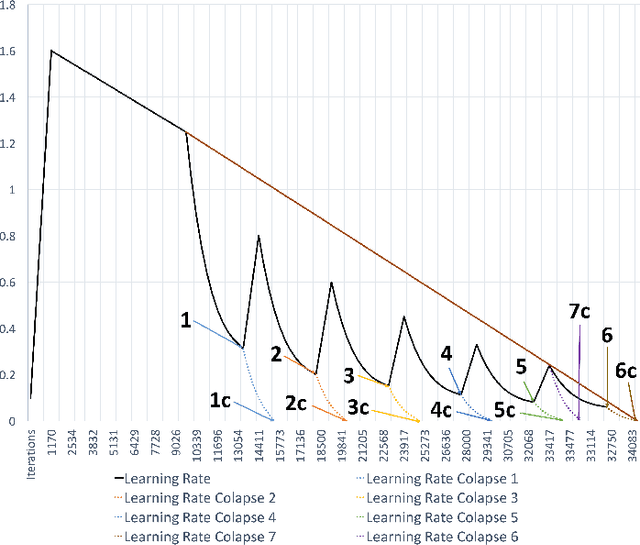

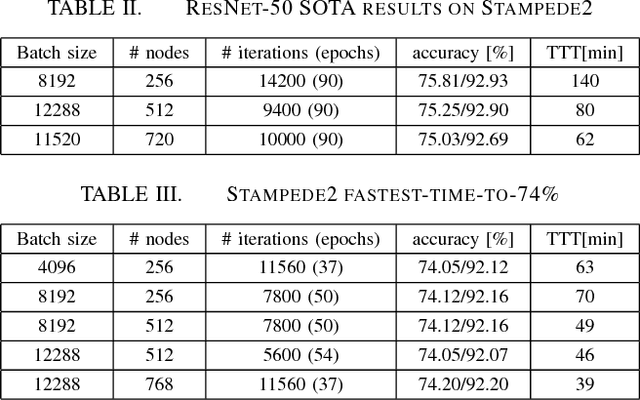
Abstract:For the past 5 years, the ILSVRC competition and the ImageNet dataset have attracted a lot of interest from the Computer Vision community, allowing for state-of-the-art accuracy to grow tremendously. This should be credited to the use of deep artificial neural network designs. As these became more complex, the storage, bandwidth, and compute requirements increased. This means that with a non-distributed approach, even when using the most high-density server available, the training process may take weeks, making it prohibitive. Furthermore, as datasets grow, the representation learning potential of deep networks grows as well by using more complex models. This synchronicity triggers a sharp increase in the computational requirements and motivates us to explore the scaling behaviour on petaflop scale supercomputers. In this paper we will describe the challenges and novel solutions needed in order to train ResNet-50 in this large scale environment. We demonstrate above 90\% scaling efficiency and a training time of 28 minutes using up to 104K x86 cores. This is supported by software tools from Intel's ecosystem. Moreover, we show that with regular 90 - 120 epoch train runs we can achieve a top-1 accuracy as high as 77\% for the unmodified ResNet-50 topology. We also introduce the novel Collapsed Ensemble (CE) technique that allows us to obtain a 77.5\% top-1 accuracy, similar to that of a ResNet-152, while training a unmodified ResNet-50 topology for the same fixed training budget. All ResNet-50 models as well as the scripts needed to replicate them will be posted shortly.
CLTune: A Generic Auto-Tuner for OpenCL Kernels
Mar 19, 2017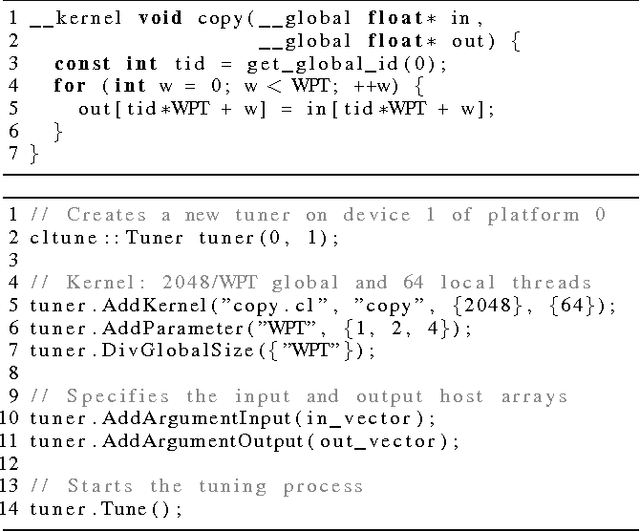



Abstract:This work presents CLTune, an auto-tuner for OpenCL kernels. It evaluates and tunes kernel performance of a generic, user-defined search space of possible parameter-value combinations. Example parameters include the OpenCL workgroup size, vector data-types, tile sizes, and loop unrolling factors. CLTune can be used in the following scenarios: 1) when there are too many tunable parameters to explore manually, 2) when performance portability across OpenCL devices is desired, or 3) when the optimal parameters change based on input argument values (e.g. matrix dimensions). The auto-tuner is generic, easy to use, open-source, and supports multiple search strategies including simulated annealing and particle swarm optimisation. CLTune is evaluated on two GPU case-studies inspired by the recent successes in deep learning: 2D convolution and matrix-multiplication (GEMM). For 2D convolution, we demonstrate the need for auto-tuning by optimizing for different filter sizes, achieving performance on-par or better than the state-of-the-art. For matrix-multiplication, we use CLTune to explore a parameter space of more than two-hundred thousand configurations, we show the need for device-specific tuning, and outperform the clBLAS library on NVIDIA, AMD and Intel GPUs.
 Add to Chrome
Add to Chrome Add to Firefox
Add to Firefox Add to Edge
Add to Edge